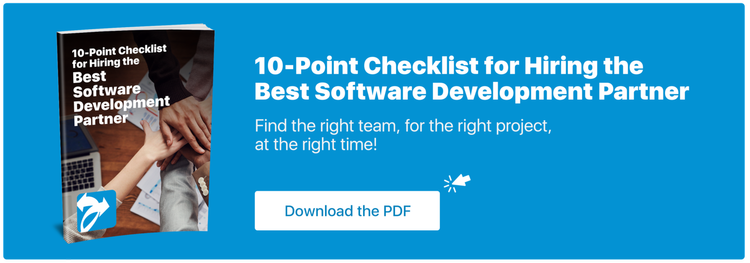Social movements are powerful and heavily influential in this day and age of innovation. Social justice communities are arguably the loudest they’ve ever been with the help of social media platforms and news-sharing outlets.
People can express their thoughts and ideas to audiences on these platforms, allowing interactivity. It could be argued that as a result of this acceptance, justice and initiative are now the public's language. With activism comes brands aiming to connect with consumers by taking a position.
Among the major initiatives of today is eco-friendliness, which in 2022 contributes to the majority of consumers' desire to support a brand or product. There is a genuine desire to save the planet that brands can materialize by promoting and creating opportunities to fund sustainability.
Recently in Canada, for example, the government has said they’re going to require every vehicle sold in 2035 to be entirely electric. Another example is big players like Google, Apple, and Amazon, who promised to take drastic measures to minimize their carbon footprint. One last example is The Climate Clock in New York City at the Metronome which counts down how much time there is until damage to the climate becomes irreversible.
Environmental sustainability is a factor that is increasingly prevailing as a pillar of businesses' survival during this time. More than 65% of executives deem it “necessary” for market survival in 2022. It’s non-negotiable then for financial institutions to contribute to this movement and “go green”.
We could say that this is one of the greatest approaches to public relations an organization could take at the moment, but that would be rather redundant in contrast to what some of these companies have done and are doing. With that being said, here are some initiatives from businesses in the FinTech realm that have based their approach on some form of environmental sustainability:
1. TreeCard
This unique initiative focuses on reforesting areas worldwide while simultaneously eliminating plastic. A TreeCard is a credit card made of wood. The business model works through the company taking a fee on a per-usage basis from the merchant.
This accumulation of fees then goes to planting trees on behalf of the customers. It should be mentioned that typically, this fee would be taken as profit, but TreeCard puts 80% toward their replanting initiative.
2. Stripe Climate
Stripe is a major entity in the financial industry. They launched Stripe Climate as a way for businesses to donate 1% of their profits to fund the development of carbon removal technologies.
From a business perspective, this is brilliant, especially since participating organizations will receive a badge from Stripe for their clients to see (which we could even dare to call free marketing).
3. Joro
This app hit the mark for its target audience beautifully through its slogan, which states “build a solution as big as the problem”. Joro partnered with FinTech giant Plaid to reduce the impact of carbon emissions.
They make this possible by tracking users' purchases and displaying graphs in the app for users to see where their spending is going and how it impacts their carbon footprint. Someone using Joro will effectively be able to steer their spending habits in an environmentally friendly direction.
4. Raise Green
Many people love to support their local communities as opposed to something global. Raise Green allows users to find businesses nearby that have green initiatives (this technology is backed by IBM).
Once someone has found a cause that interests them, they can invest and own a piece of that project. Users enjoy the transparency of this platform; once they’ve invested, they can watch their investment generate clean energy (that is measured in kWh).
5. Trine
The first thing that sticks out about Trine’s branding is the one-liner that goes “For people, for the planet, for profit”. This ethos is perfect for their brand since the goal is to be transparent while spreading awareness of their product in addition to environmental issues that users can support.
The business model is constructed as a peer-to-peer loan platform that aims at supporting solar energy initiatives. Users can get involved by investing in these projects starting at a minimum of $25. In 2022, the platform has seen investments from more than 10,000 people.
6. Treelion
Here is an organization that beautifully exemplifies what it means to be a sustainable FinTech company. Their product is providing a decentralized network for businesses to track and manage their digital eco-friendly products through blockchain.
Their product effectively becomes an enabler for the creation, development, and flow of capital, among green digital economies and ecosystems.
7. Aspiration
This platform is a doubleheader. One that solves the needs of the planet through reforestation, and one that supports people’s future by providing an IRA (Individual Retirement Account).
Both features are made possible by using an aspiration card which rounds up every dollar spent and uses spare change to plant trees. The IRA is created by users investing in sustainable businesses, allowing you to save on taxes by opting to defer them until you retire.
The Benefit of Green Finance
Digital banking is already more beneficial to the environment in comparison to traditional banking, which one can glean from the sheer elimination of driving to the bank, paper statements, and delivery of statements. If we’re going to state that FinTech is paving the way to an environmentally sustainable future, we need to step back and realize why that is.
First of all, finance is the only way people can function in the world day-to-day, nonetheless building a future. So, this is something everyone uses. Imagine if something every person uses was directly benefiting the sustainability of the world. This is a necessary movement. This is not to say that every business should base their model on it, but to have options aligned with this movement would be the ideal situation.
What’s Next?
In this section, we saw some green FinTechs that worked to create sustainability using B2B and B2C approaches. At this point, these businesses have strides to make before they become profitable. It is a new approach for FinTechs that shows promise for the future in terms of business and environmental sustainability. What matters most for organizations looking to get started in this sector is having the right software to support their efforts.
Written By Ben Brown
—
ISU Corp is an award-winning software development company, with over 17 years of experience in multiple industries, providing cost-effective custom software development, technology management, and IT outsourcing.
Our unique owners’ mindset reduces development costs and fast-tracks timelines. We help craft the specifications of your project based on your company's needs, to produce the best ROI. Find out why startups, all the way to fortune 500 companies like General Electric, Heinz, and many others have trusted us with their projects. Contact us here.

















